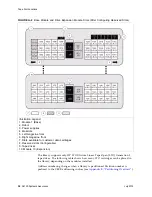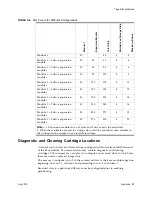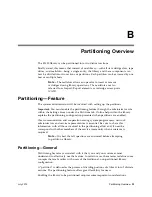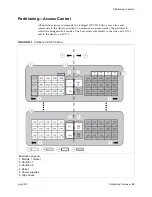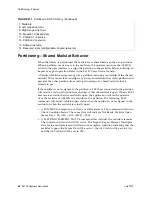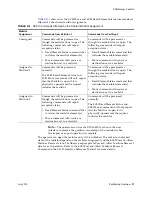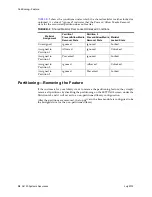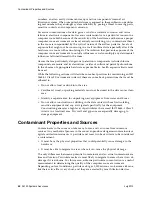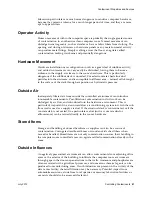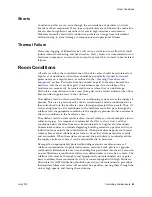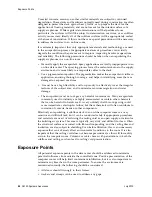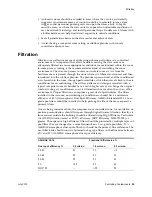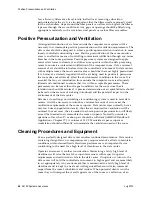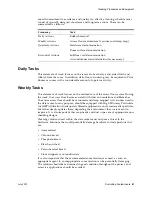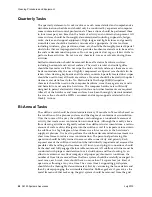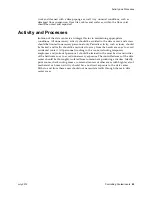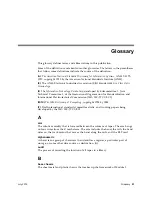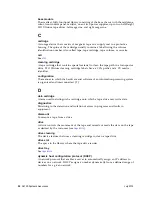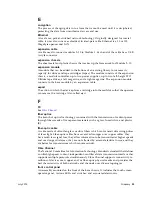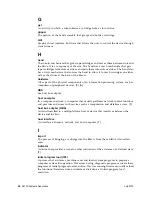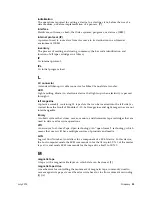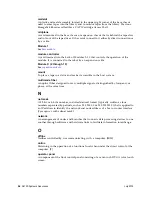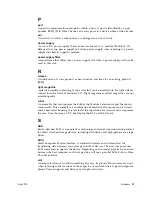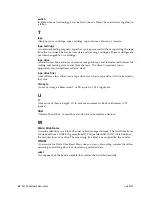
Exposure Points
44
SL150 Systems Assurance
July 2012
Unsealed concrete, masonry or other similar materials are subject to continued
degradation. The sealants and hardeners normally used during construction are often
designed to protect the deck against heavy traffic, or to prepare the deck for the
application of flooring materials, and are not meant for the interior surfaces of a
supply air plenum. While regular decontaminations will help address loose
particulate, the surfaces will still be subject to deterioration over time, or as subfloor
activity causes wear. Ideally all of the subfloor surfaces will be appropriately sealed
at the time of construction. If this is not the case, special precautions will be necessary
to address the surfaces in an on-line room.
It is extremely important that only appropriate materials and methodology are used
in the encapsulation process. Inappropriate sealants or procedures can actually
degrade the conditions they are meant to improve, impacting hardware operations
and reliability. The following precautions should be taken when encapsulating the
supply air plenum in an on-line room:
• Manually apply the encapsulant. Spray applications are totally inappropriate in an
on-line data center. The spraying process forces the sealant airborne in the supply
airstream, and is more likely to encapsulate cables to the deck.
• Use a pigmented encapsulant. The pigmentation makes the encapsulant visible in
application, ensuring thorough coverage, and helps in identifying areas that are
damaged or exposed over time.
• It must have a high flexibility and low porosity to effectively cover the irregular
textures of the subject area, and to minimize moisture migration and water
damage.
• The encapsulant must not out-gas any harmful contaminants. Many encapsulants
commonly used in industry are highly ammoniated or contain other chemicals
that can be harmful to hardware. It is very unlikely that this out-gassing could
cause immediate, catastrophic failure, but these chemicals will often contribute to
corrosion of contacts, heads or other components.
Effectively encapsulating a subfloor deck in an on-line computer room is a very
sensitive and difficult task, but it can be conducted safely if appropriate procedures
and materials are used. Avoid using the ceiling void as an open supply or return for
the building air system. This area is typically very dirty and difficult to clean. Often
the structural surfaces are coated with fibrous fire-proofing, and the ceiling tiles and
insulation are also subject to shedding. Even before filtration, this is an unnecessary
exposure that can adversely affect environmental conditions in the room. It is also
important that the ceiling void does not become pressurized, as this will force dirty
air into the computer room. Columns or cable chases with penetrations in both the
subfloor and ceiling void can lead to ceiling void pressurization.
Exposure Points
All potential exposure points in the data center should be addressed to minimize
potential influences from outside the controlled zone. Positive pressurization of the
computer rooms will help limit contaminant infiltration, but it is also important to
minimize any breaches in the room perimeter. To ensure the environment is
maintained correctly, the following should be considered:
• All doors should fit snugly in their frames.
• Gaskets and sweeps can be used to address any gaps.
Содержание StorageTek SL150
Страница 6: ...6 SL150 Systems Assurance July2012 ...
Страница 8: ...8 SL150 Systems Assurance July2012 ...
Страница 10: ...Access to Oracle Support 10 SL150 Systems Assurance July2012 ...
Страница 18: ...Tape Drives and Media 18 SL150 Systems Assurance July2012 ...
Страница 22: ...Tape Drive Cleaning 22 SL150 Systems Assurance July2012 ...
Страница 32: ...Tape Slot Locations 32 SL150 Systems Assurance July2012 ...
Страница 50: ...Activity and Processes 50 SL150 Systems Assurance July2012 ...
Страница 60: ...60 SL150 Systems Assurance July2012 ...

